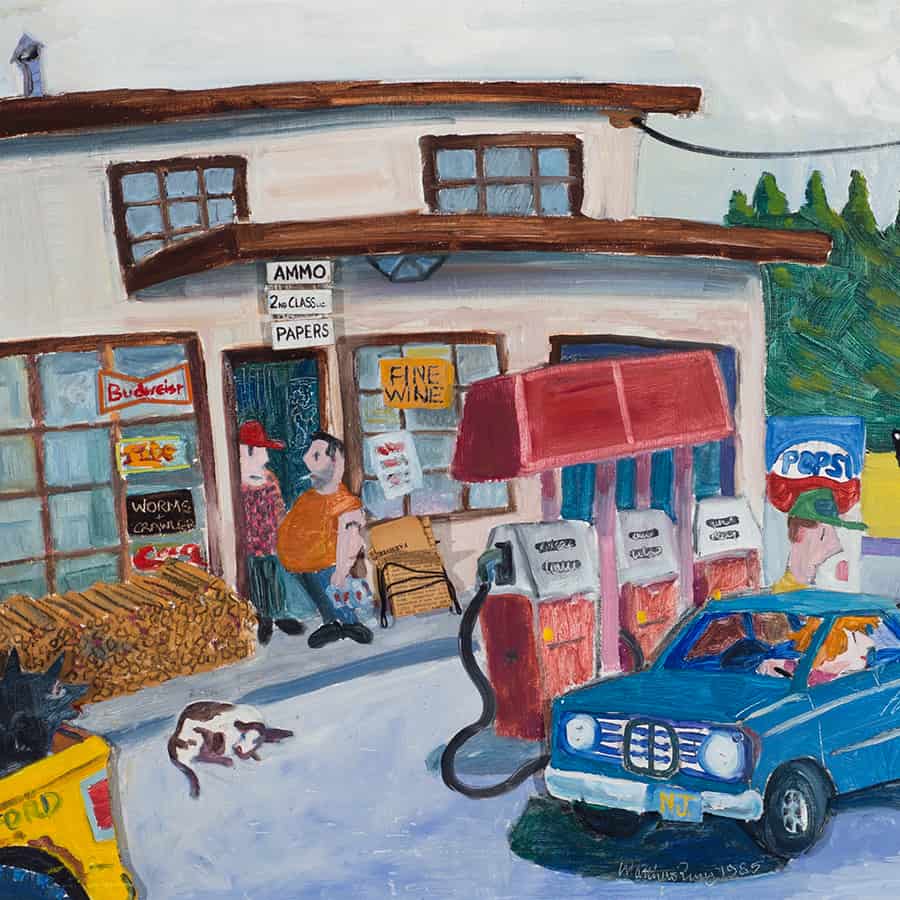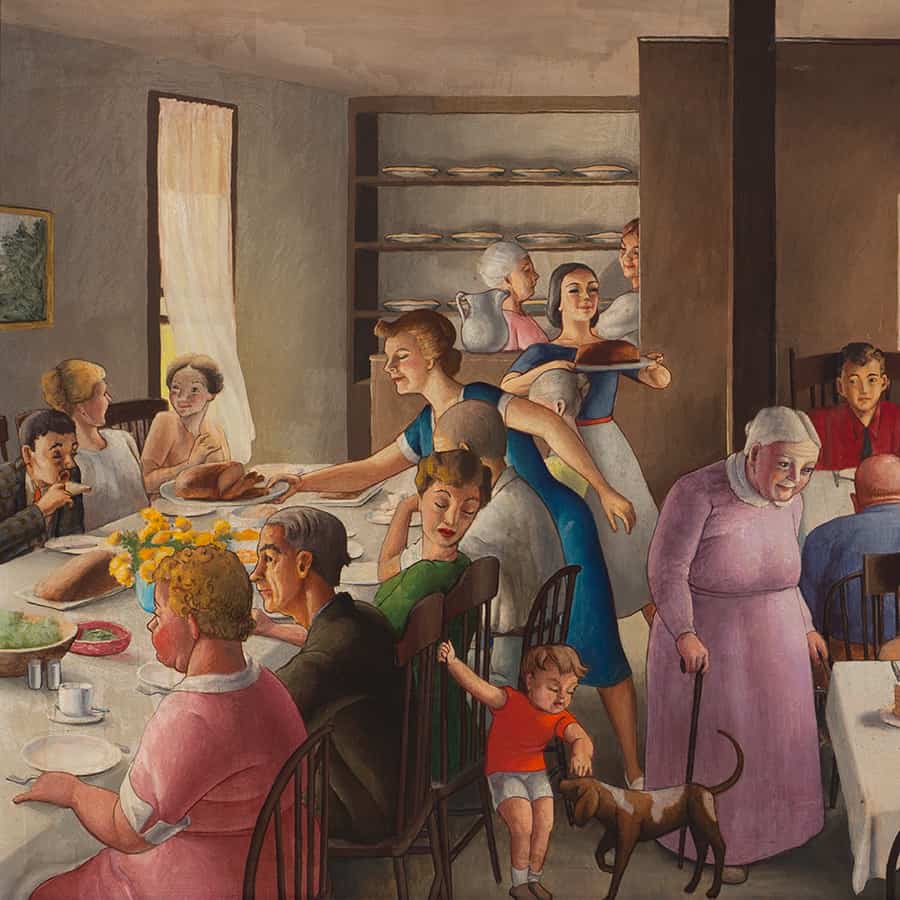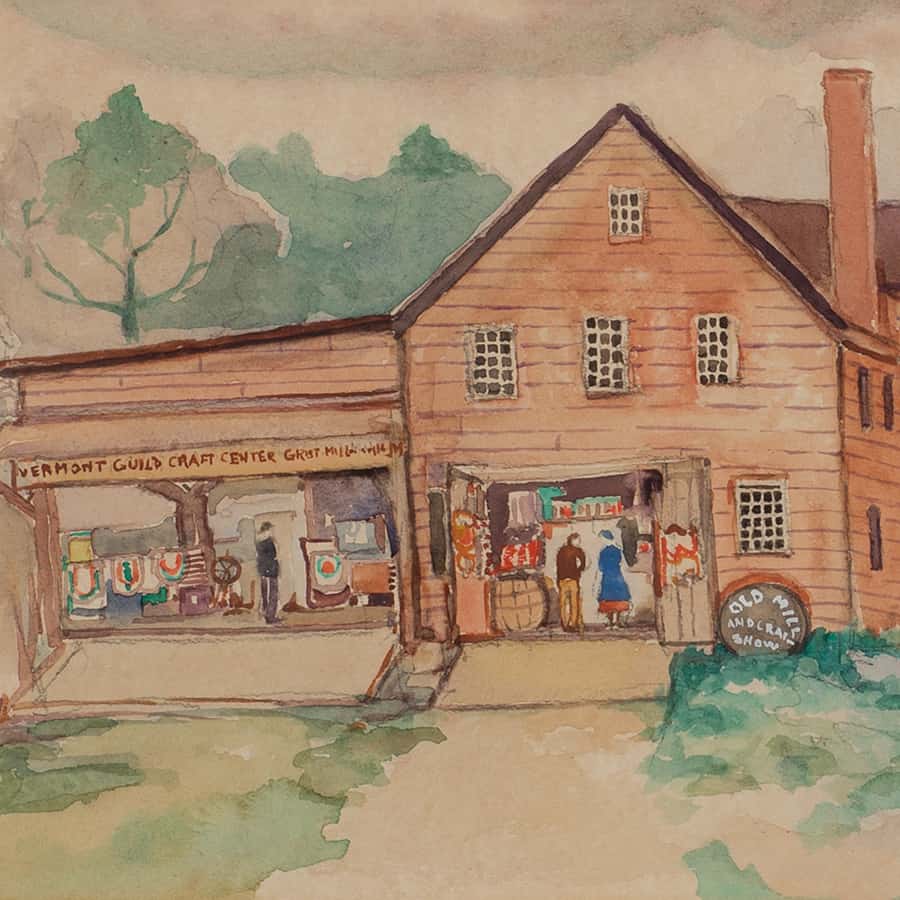Village Life
A Vermont village without a country store is sorely lacking one of the most important socioeconomic elements of its community. It is common knowledge in Vermont that the local country store is the heart and soul of a small town; even the stores that sit on the outermost edges of a town become the central gathering place. Country stores were, and in some cases still are, often the local post offices, gas stations, coffee roasters, and warming stations on a cold winter’s day, where outdoor workers could thaw out frost-bitten fingers and toes by the woodstove.
The country stores were where some people, mostly retired men, dropped in daily for an hour or two to sit, or in the Vermont vernacular “set,” sometimes on a pew-like wooden bench called a “settle.” Every country store had its regular “setters,” and the folks who were settin’ usually set beside a wooden soda cracker barrel with a checkerboard painted on the top, where the setters played a few games for bragging rights.
Excerpt from the book For the Love of Vermont: The Lyman Orton Collection

Benson’s Garage, 1985 (Weston)
Oil on Canvas, Collage | 19 x 24 in.
Matthew Perry, Working Artist
Matthew Perry is an artist living and working in Shaftsbury Vermont. He is a co-founder of the Vermont Arts Exchange in North Bennington, a nonprofit arts outreach organization.
Perry once had a studio space above this the garage in Weston and comments on the scene at Benson’s in those days –
The girl in the car, Georgiana, is a friend who used to come up to Weston and visit me. The garage was run by Ray Benson, and I used to get work done on my Volkswagen Beetle there by a mechanic named Butch Jelley. He was a stock car racer, sort of a legend around here. Actually, that’s Ray, the owner of the garage, in the door with a six-pack of beer.
I knew Benson’s was not always going to be around. I still get inspired by seeing places like this. I feel like these people and these places are important to document as a part of our culture.

Family Restaurant, 1954
Tempera on Masonite | 19 x 24 in.
Kyra Markham (1891-1967)
When Kyra Markham created this painting, she was living with her husband in a rustic farmhouse in Halifax, Vermont. We do not know the name of the “restaurant”—if it actually was one–in this scene, nor has anyone so far been able to name the people in the painting. In another one of Markham’s paintings, the people have been identified as locals, leading us to believe that these people, too, were people Markham knew in Halifax. Note the shelves in the background, built just for holding a great many pies. This may be a church vestry, a town hall, or some other public space.
Kyra Markham did Federal Arts Project work in the 1930s. She did commercial artwork (including anti-Nazi propaganda during World War II); she illustrated books; she painted; she was a printmaker; she designed sets; she was a movie art director; and she was a muralist.
She married a Broadway set designer in 1927, and the couple moved to Vermont around 1946. Markham became a member of the Southern Vermont Artists.

Vermont Guild and Grist Mill, 1948 (Weston)
Watercolor on Paper | 6 3/4 x 10 5/8 in.
Palmer Hayden (1890-1973)
The building in the painting is in Weston built over the dam for waterpower on the West River. It now operates as the Old Mill Museum, a working grist mill. Palmer Hayden came to Weston to visit Lyman Orton’s father Vrest Orton. This is one of two works by him in The Orton Collection; the other scene is the Orton’s family business in Weston, The Vermont Country Store.
Named Peyton Cole Hedgeman at his birth in Widewater, Virginia, Palmer Hayden lived in New York City. He was among a group of artists, writers, and performers during a period of cultural and social revival known as the Harlem Renaissance (lasting from about 1910 to the mid-1930s). Hayden produced important award-winning works well into his elder years, traveling between France and the United States.
